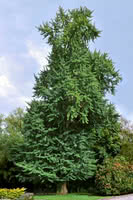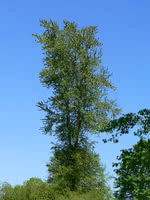Mon-Fri 9am - 5pm Mountain time
Ginkgo Biloba vs Black Cottonwood
Ginkgo biloba
Populus trichocarpa
NOT AVAILABLE THIS SEASON - MIGHT RETURN
COMING SOON
(new stock expected: fall of 2025)
The Ginkgo Biloba is regarded as one of the most distinctive and beautiful of all the deciduous trees, and has remained genetically unchanged for millions of years. Its beautifully fan-shaped leaves develop a clear yellow colour in fall. Graceful and attractive year-round, Ginkgo is the perfect conversation starter in your yard.
Black Cottonwood is the largest and tallest of the North American poplars. Named after its white, fluffy seeds with cottony hairs, this hardy tree produces sticky, fragrant buds and has a straight growth habit. Black Cottonwood needs ample moisture and nutrients to grow successfully to full height and are found in the Western provinces and the Yukon with BC being its heartland.
Ginkgo Biloba Quick Facts
Black Cottonwood Quick Facts
Toxicity: Uncooked nuts in large quantities

